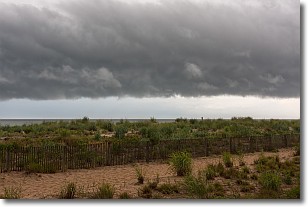Weather Alert in Minnesota
Red Flag Warning issued May 13 at 10:08AM CDT until May 13 at 9:00PM CDT by NWS Duluth MN
AREAS AFFECTED: Koochiching; North St. Louis; Northern Cook/Northern Lake; North Itasca; Central St. Louis; North Cass; South Itasca; South Cass; Crow Wing; Northern Aitkin; South Aitkin; Carlton/South St. Louis; Pine
DESCRIPTION: ...CRITICAL FIRE WEATHER CONDITIONS FOR POTIONS OF NORTHEAST MINNESOTA AND NORTHWEST WISCONSIN TODAY... .Strong southerly winds are forecast once again today, although they will be weaker than Sunday and Monday. Afternoon RH values will dip into the 15 to 25 percent range across the Northland with high temperatures generally in the 80s to near 90 degrees. These conditions will create critical fire weather conditions over nearly all of northeast Minnesota (except for the immediate Lake Superior shore areas) and portions of northwest WI, mainly around the pine barrens. Near-critical conditions are forecast over north-central Wisconsin due to lighter winds. * AFFECTED AREA...In Minnesota, Koochiching, North St. Louis, Northern Cook and Lake, North Itasca, Central St. Louis, North Cass, South Itasca, South Cass, Crow Wing, Northern Aitkin, South Aitkin, Carlton and South St. Louis and Pine. * WINDS...South 10 to 20 mph with gusts up to 25 mph. * RELATIVE HUMIDITY...As low as 18 percent. * IMPACTS...Any fires that ignite could spread rapidly and become difficult to control. Outdoor burning is not recommended.
INSTRUCTION: A Red Flag Warning means that critical fire weather conditions are either occurring now, or will shortly. A combination of strong winds, low relative humidity, and warm temperatures can contribute to extreme fire behavior.
Want more detail? Get the Complete 7 Day and Night Detailed Forecast!
Current U.S. National Radar--Current
The Current National Weather Radar is shown below with a UTC Time (subtract 5 hours from UTC to get Eastern Time).

National Weather Forecast--Current
The Current National Weather Forecast and National Weather Map are shown below.

National Weather Forecast for Tomorrow
Tomorrow National Weather Forecast and Tomorrow National Weather Map are show below.

North America Water Vapor (Moisture)
This map shows recent moisture content over North America. Bright and colored areas show high moisture (ie, clouds); brown indicates very little moisture present; black indicates no moisture.

Weather Topic: What are Shelf Clouds?
Home - Education - Cloud Types - Shelf Clouds
 Next Topic: Sleet
Next Topic: Sleet
A shelf cloud is similar to a wall cloud, but forms at the front
of a storm cloud, instead of at the rear, where wall clouds form.
A shelf cloud is caused by a series of events set into motion by the advancing
storm; first, cool air settles along the ground where precipitation has just fallen.
As the cool air is brought in, the warmer air is displaced, and rises above it,
because it is less dense. When the warmer air reaches the bottom of the storm cloud,
it begins to cool again, and the resulting condensation is a visible shelf cloud.
Next Topic: Sleet
Weather Topic: What is Snow?
Home - Education - Precipitation - Snow
 Next Topic: Stratocumulus Clouds
Next Topic: Stratocumulus Clouds
Snow is precipitation taking the form of ice crystals. Each ice crystal, or snowflake,
has unique characteristics, but all of them grow in a hexagonal structure.
Snowfall can last for sustained periods of time and result in significant buildup
of snow on the ground.
On the earth's surface, snow starts out light and powdery, but as it begins to melt
it tends to become more granular, producing small bits of ice which have the consistency of
sand. After several cycles of melting and freezing, snow can become very dense
and ice-like, commonly known as snow pack.
Next Topic: Stratocumulus Clouds
Current conditions powered by WeatherAPI.com




